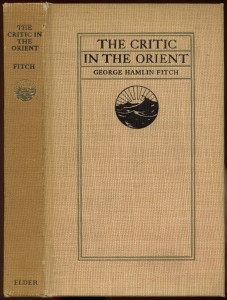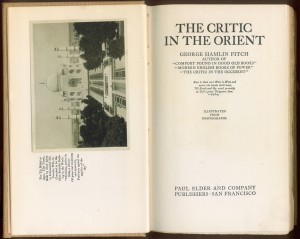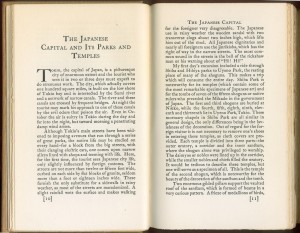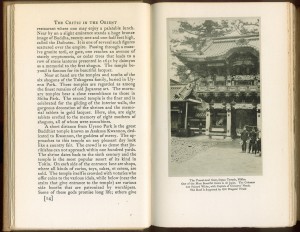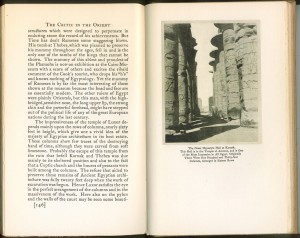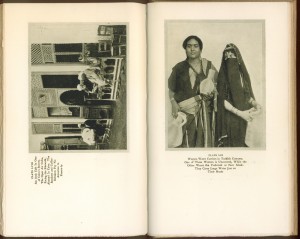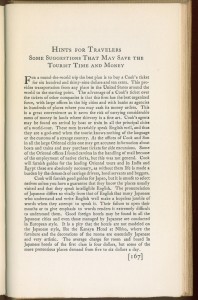
What you bring away with you from a tour of Europe depends largely upon your reading. If through great writers you know intimately the history, art and architecture of a country, you will find that your travels serve mainly to stamp indelibly upon the memory many of the impressions formed from the books you have read. … Americans are too apt to neglect this reading, which forms a vital part of the education of the European. … Hence they lose that perfect blending of romance and reality, as one does who listens to a great opera of which he knows neither the words nor the story.
In 1912, San Francisco Chronicle sent critic George Hamlin Fitch (1852-1925) on a seven-month trip around the world, from which he cabled daily dispatches for publication in the newspaper. After his return, Fitch distilled his stories into two books: The Critic in the Orient (featured last time), and today’s spotlight, The Critic in the Occident. The books were published by Paul Elder in September 1913.

Fitch’s itinerary in the West was:
- Greece, The Fountainhead of all Art and Letters
- Italy, Home of Art and Monuments
- France, Land of Romance, Thrift and Artistic Life
- London, Seat of the Founders of World-wide Empire
- New York City, The Skyscraping Marvel of the New World
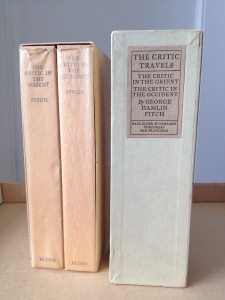
Fitch devotes a chapter to the ruins of Pompeii, which had been discovered in 1599 and later rediscovered in 1748. The well-read Fitch was clearly not a prude, but is not very fond of the overtly erotic nature of many of the murals and mosaics, which he blames on the inferior nature of the Roman’s pagan faith:
The Roman phallic worship tinctures all the art in Pompeii and brutalizes it. It is shown in the stone phallus, built into the walls of many buildings, to keep off evil spirits. … From these remains the conclusion is inevitable that the ancient roman was not immoral but unmoral. Christianity introduced a new code of morals in which purity of thought was one of the leading features. Beside it the Pagan religions are unspeakably gross and vile. It was not strange that the Egyptian worship of Isis found many followers in Pompeii and that the initiation of novices degenerated into the most fantastic orgies.
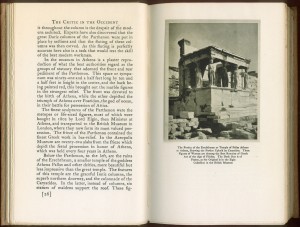
Fitch is far more impressed with Venice: “The charm of Venice lies in its unlikeness to any other place. You may have read of its canals and its lagoons, its palaces and its prisons, its gondolas that glide mysteriously through dark stretches of glassy water, but the reality comes upon you with unexpected force.”
Paris “is a city of surprises and disappointments. As a place of magnificent vistas it surpasses one’s conceptions, but its buildings and its statuary disappoint the tourist fresh from Italy. Its shops, which were once the wonder of Europe, are now easily surpassed in artistic quality by the shops of second-rate cities like Rome and Naples. Its gayety and brightness it has not lost, nor it fondness for the outdoor life of the cafes and boulevards and great public parks.”

London: “The first impression that London makes is one of immensity. To the sensitive tourist it seems impossible in a short visit to see anything of this huge city, with its miles of streets and its thousands of famous buildings. This impression is heightened by the gloom due to a cloudy sky and a pall of soft coal smoke.”
New York: “The first sight of the Statue of Liberty in New York harbor and of the ships flying the Stars and Stripes looks very good to the man who has scarcely seen an American flag since he left home seven months before. Then comes that awe-inspiring skyline of New York, which is changed by every new skyscraper–a spectacle more impressive than anything that can be seen in Europe.”

